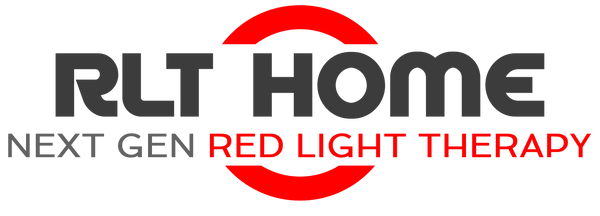Red Light Therapy for Rosacea: A Soothing Solution
Rosacea can affect you emotionally as well as physically. If you suffer from rosacea, you have likely felt self-conscious, embarrassed, or worried that you were being stared at. Rosacea is a persistent condition and is resistant to traditional treatment options, which can be frustrating. [1]
Red light therapy is an exciting new alternative to standard treatments that are not consistently effective.
Table of Contents
What Is Rosacea?
Rosacea (also known as acne rosacea) is an inflammatory skin disorder that causes redness and visible blood vessels to appear on your face. It may also produce small, red, pus-filled bumps, raised red patches, nose enlargement, and eye irritation. Rosacea is often mistaken for acne, but it differs in cause. Acne is caused by bacteria and oil, whereas rosacea is driven by inflammation.
“Flare-ups” of rosacea can last for weeks or months, then resolve on their own. Rosacea can seemingly come and go at will, without warning or apparent cause. Anyone can suffer from rosacea, but it is most common in middle-aged women with fair skin complexions. There is no cure for rosacea, but its signs and symptoms can be treated and reduced.
How Does Red Light Therapy Work to Treat Rosacea?
Red light wavelengths penetrate your skin and are absorbed by the mitochondria (energy production centers) of your skin cells, stimulating the production of adenosine triphosphate (ATP). ATP is the “currency” by which your body transmits cellular energy.
A greater level of ATP boosts cellular energy and triggers greater collagen and elastin production, elevating your body’s natural healing capabilities. Collagen and elastin are essential proteins responsible for keeping your skin supple and healthy; thus, elevated levels promote better skin health and quell the effects of rosacea. In addition to generating greater cellular energy, red light therapy at home forms new capillaries that deliver nutrients to your skin. It also improves the functioning of your lymphatic system. Your skin is energized and your cells are able to more efficiently dispose of waste and toxins.
Because the flow of oxygen to your cells is increased, inflammation is reduced. Since rosacea is an inflammation-driven condition, red light therapy can provide relief and a reduction of rosacea symptoms. Red light-emitting diode (LED) and near-infrared (NIR) light do not contain damaging ultraviolet (UV) radiation. This means that they can provide anti-inflammatory therapy and improve cell function without damaging your skin. Red light therapy is safe for all ages and skin types, FDA-approved, and causes no adverse side effects.
What Are the Best Wavelengths for Treating Rosacea?
The generally recommended range of red light wavelengths for the treatment of rosacea is 610 to 700 nanometers (nm), falling in the range of short-wave red LED light. In various clinical trials, 630nm in particular has shown to be beneficial. For more severe symptoms, NIR wavelengths of 830 to 855 nm can also be useful. Frequently, a combination of red LED and NIR wavelengths is the most successful course of treatment. The RLT Home devices offer these combinations for effective at-home use.
How Long Will It Take To See Results?
The reaction time to red light therapy is individualized, so there is no standard answer. On average, profound effects are observed between eight to ten weeks from beginning therapy. Depending upon your initial condition, some results might be observed as soon as four to six weeks. The timing varies by person and severity of symptoms. For specific guidance, you can refer to our official usage guide.
What Other Steps Can You Take to Alleviate Rosacea?
In addition to red light therapy, there are many things you can do every day to minimize rosacea symptoms:
- Use sunscreen to protect your skin from damaging UV rays that can aggravate rosacea.
- Protect your skin from cold weather. Windburn and very cold air temperatures can dry and irritate your skin.
- Drink plenty of water and eat a healthy diet.
- Avoid using harsh facial cleansers. Choose mild, natural products for face-washing and moisturizing.
- Avoid stress as much as possible.
What About Laser Resurfacing?
Laser resurfacing consists of short beams of pulsating laser light being directed at your skin. While it can produce results, it is a painful and invasive procedure that requires significant healing time. Red light therapy, on the other hand, produces natural results, is painless and non-invasive, and requires no post-treatment healing time. Best of all, there are no repeated medical appointments and no recurring expenses. You need to only purchase your red light therapy device once to begin enjoying its therapeutic benefits at home.
What Does Science Say?
Very little research has been performed to prove the efficacy of red light therapy on rosacea specifically. It is, however, scientifically proven to reduce swelling related to sports injuries, joint disorders, arthritis, and other inflammatory conditions. [2] [3] [4] A decrease in swelling and inflammation will intrinsically relieve the appearance and symptoms of rosacea. With a red light therapy device, you can safely and effectively relieve the embarrassing and sometimes painful symptoms of rosacea in the privacy of your own home.
Resources
- [1] Psychosocial Impact of Rosacea
- [2] LLLT for Chronic Joint Disorders
- [3] Efficacy of RLT on pain in cervical osteoarthritis
- [4] Effect of light therapy on exercise performance








1 comment
I started the róseacea of the face and now I have Inflamed eye lids and skin under the eye, along with redness and burning.
The roseacea on the face has not been a factor since I first started having flare ups around my eyes 4 months ago.
Flare ups occur 1-2 times a month.
Help!